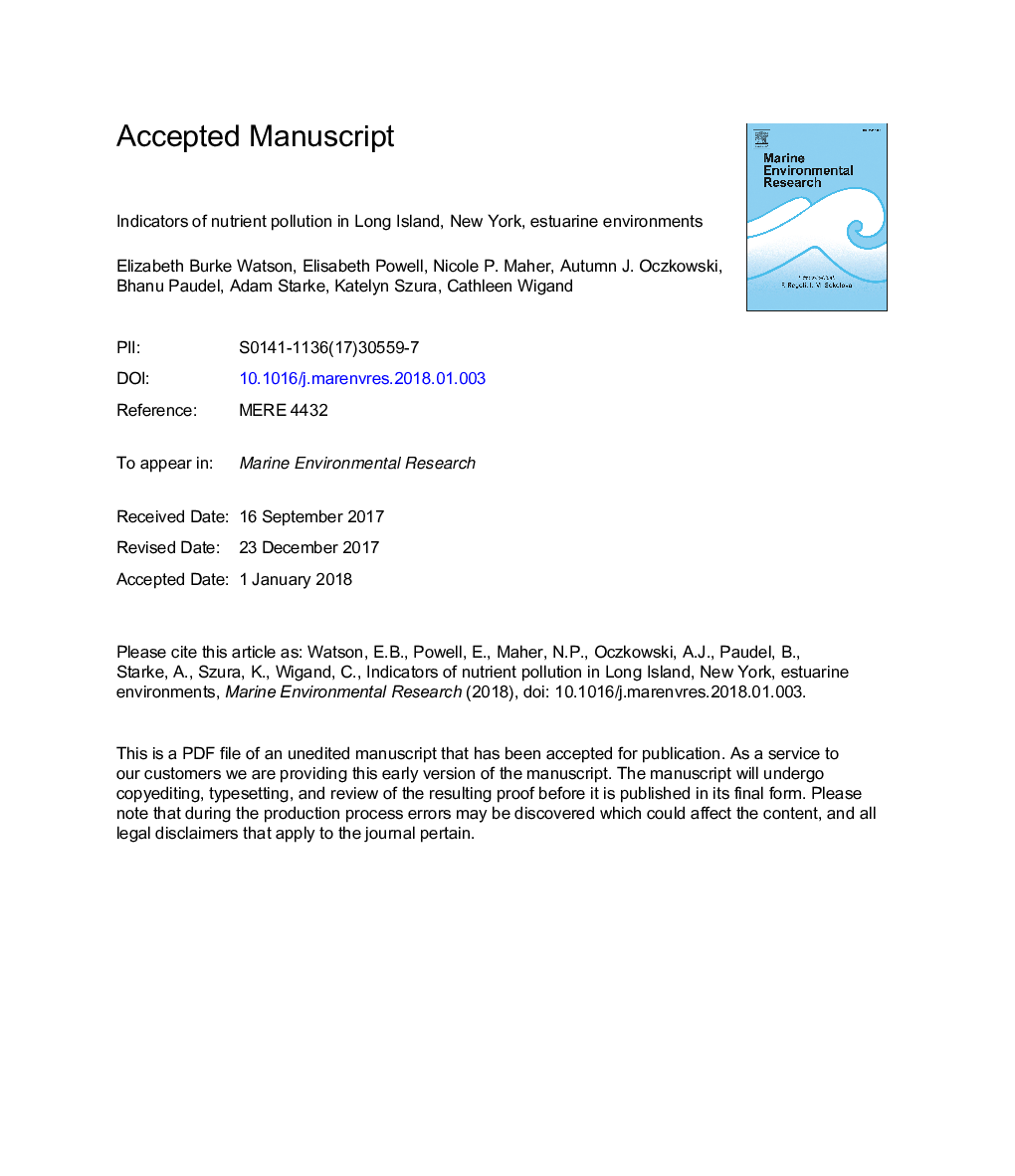| Article ID | Journal | Published Year | Pages | File Type |
|---|---|---|---|---|
| 8886386 | Marine Environmental Research | 2018 | 61 Pages |
Abstract
Roughly eight million people live on Long Island, including Brooklyn and Queens, and despite improvements in wastewater treatment, nearly all its coastal waterbodies are impaired by excessive nitrogen. We used nutrient stoichiometry and stable isotope ratios in estuarine biota and soils to identify water pollution hot spots and compare among potential indicators. We found strong gradients in δ15N values, which were correlated with watershed land cover, population density, and wastewater discharges. Weaker correlations were found for δ13C values and nutrient stoichiometric ratios. Structural equation modeling identified contrasts between western Long Island, where δ15N values depended on watershed population density, and eastern Long Island where δ15N values reflected agriculture and sewage discharges. These results illustrate the use of stable isotopes as water quality indicators, and establish a baseline against which the efficacy of strategies to reduce nutrients can be measured.
Related Topics
Physical Sciences and Engineering
Earth and Planetary Sciences
Oceanography
Authors
Elizabeth Burke Watson, Elisabeth Powell, Nicole P. Maher, Autumn J. Oczkowski, Bhanu Paudel, Adam Starke, Katelyn Szura, Cathleen Wigand,
